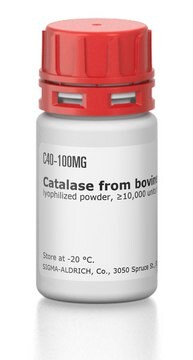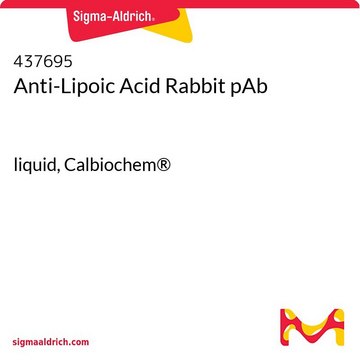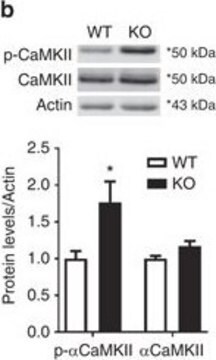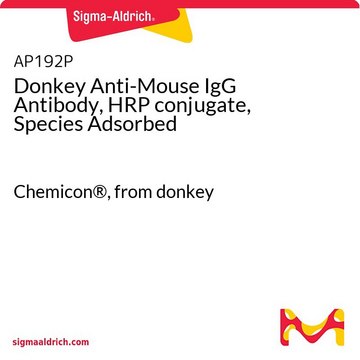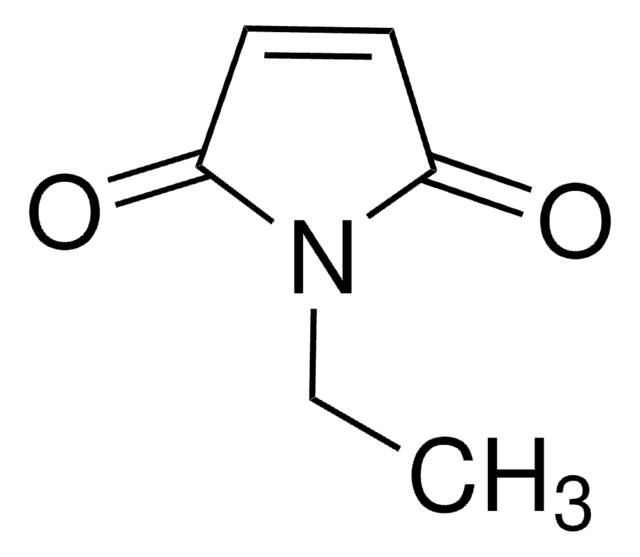ABT1346
Anti-Bikunin (CP6)
serum, from rabbit
Sinónimos:
Protein AMBP, alpha-1-microglobulin/bikunin precursor, Inter-alpha-trypsin inhibitor light chain, ITI-LC, Bikunin, EDC1, HI-30, Uronic-acid-rich protein
About This Item
Productos recomendados
biological source
rabbit
Quality Level
antibody form
serum
antibody product type
primary antibodies
clone
polyclonal
species reactivity
human, mouse
species reactivity (predicted by homology)
porcine (based on 100% sequence homology), camel (based on 100% sequence homology), nonhuman primates (based on 100% sequence homology), feline (based on 100% sequence homology)
technique(s)
western blot: suitable
NCBI accession no.
UniProt accession no.
shipped in
ambient
target post-translational modification
unmodified
Gene Information
human ... AMBP(259)
General description
Specificity
Immunogen
Application
Cell Structure
Western Blotting Analysis: A representative lot detected ~132 kDa Pre-IαI (PαI, bikunin·HC3) in murine airway epithelial cell (AEC) lysate (Abbadi, A., et al. (2015). J. Biol. Chem. 291(3):1448-1455).
Western Blotting Analysis: A representative lot detected ~37 kDa human urine bikunin, as well as the in vitro generated ~125 kDa PαI (bikunin·HC3) by TNF-stimulated gene 6-/TSG-6-catalyzed transfer of a single heavy chain (HC) from mouse serum to the glycosaminoglycan of bikunin using either human urine or purified human urine bikunin (Lamkin, E., et al. (2015). J. Biol. Chem. 290(8):5156-5166).
Immunohistochemistry Analysis: A representative lot localized bikunin immunoreactivity in 10% formalin-fixed (48 h), 5% EDTA-decalcified (14 days), paraffin-embedded human femoral condylar cartilage sections (Yoshihara, Y., et al. (2008). Osteoarthritis Cartilage. 16(11):1343-1355).
Quality
Western Blotting Analysis: A 1:500 dilution of this antiserum detected bikunin immunoreactive bands (IαI & PαI) in 44.8 µg of mouse serum proteins.
Target description
Physical form
Storage and Stability
Handling Recommendations: Upon receipt and prior to removing the cap, centrifuge the vial and gently mix the solution. Aliquot into microcentrifuge tubes and store at -20°C. Avoid repeated freeze/thaw cycles, which may damage IgG and affect product performance.
Other Notes
Disclaimer
¿No encuentra el producto adecuado?
Pruebe nuestro Herramienta de selección de productos.
Storage Class
12 - Non Combustible Liquids
wgk_germany
WGK 1
flash_point_f
Not applicable
flash_point_c
Not applicable
Certificados de análisis (COA)
Busque Certificados de análisis (COA) introduciendo el número de lote del producto. Los números de lote se encuentran en la etiqueta del producto después de las palabras «Lot» o «Batch»
¿Ya tiene este producto?
Encuentre la documentación para los productos que ha comprado recientemente en la Biblioteca de documentos.
Nuestro equipo de científicos tiene experiencia en todas las áreas de investigación: Ciencias de la vida, Ciencia de los materiales, Síntesis química, Cromatografía, Analítica y muchas otras.
Póngase en contacto con el Servicio técnico